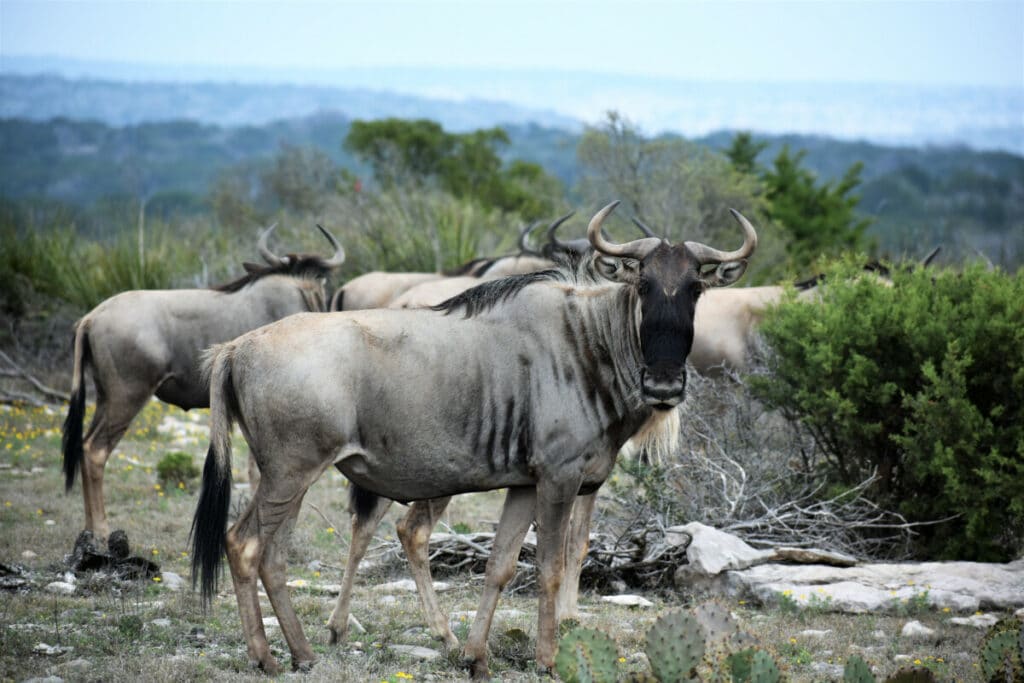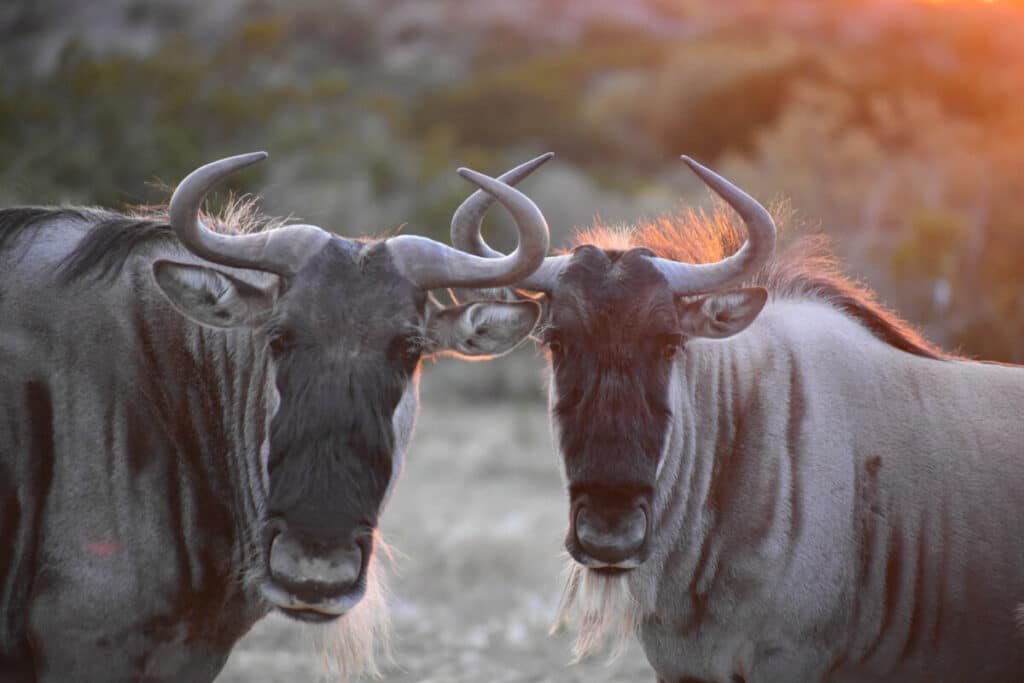8 Cool Wildebeest Facts for Kids
Wildebeests are one of the most easily recognized animals of the African savannah. They have often been depicted grazing in movies and books that are about wild animals, but how much do you really know about these fascinating creatures? Here are some fun facts about these wild animals!
1. Wildebeests Live in Herds
Wildebeests live in large herds, meaning that lots of wildebeests live together. They do this to stay safe from predators. The bigger the group of wildebeests that live together is, the less likely a single animal will be picked by a predator. The large crowd can also scare off predators looking for an easy meal.
The size of a wildebeest herd is kept in check by the food chain. If the herd is too big, then there won’t be enough food for all the wildebeests. If the herd is too small, then predators are more likely to target that group of wildebeests. It just shows that nature will keep itself in check.
2. Wildebeests are Herbivores
Wildebeests are herbivores. Herbivores eat only plants, no meat. To grind up these plants, herbivores have wide, flat teeth made for crushing and grinding leaves and shoots. Wildebeests specifically snack on the tall grasses of the African savannah that grow on flat plains.
Plants don’t provide as much energy as meat does, so herbivores like wildebeests need to eat all the time. This means that wildebeests spend all day eating and walking to find more food and don’t sleep for very long periods of time.
3. Wildebeests Migrate to Find Food
Wildebeests like to eat the fresh green grass that grows when it rains consistently, but rain in Africa isn’t constant. Areas in Africa go through rainy seasons, then long periods of drought. To find food, wildebeests will travel for miles to follow the rain. They can walk nearly 1,000 miles in search of food to eat, braving the hot African sun.
Sometimes they have to cross large rivers, where crocodiles will try to make a meal out of them. This is another scenario when traveling in large herds is helpful, as crocodiles are less likely to target a wildebeest if it is near other wildebeests.
4. Wildebeests are Native to Africa

Wildebeests call the continent of Africa home. They can be found on a large part of the continent and contribute to the life cycles in Africa by consuming the many types of grass on the savannah and by being eaten by predators like lions and cheetahs.
Africa is the second-largest continent in the world and is home to many species of animals. Africa consists of many deserts, so animals on this continent are built to withstand heat and periodic droughts.
5. Male and Female Wildebeests have Horns
Unlike some horned mammals, wildebeests both male and female wildebeests have horns. This is somewhat rare because, in some species like white-tailed deer or moose, only males have large horns so they can fight other males for females during mating season. However, all wildebeests have horns.
This is most likely because all wildebeests have to defend themselves against predators. Horns can really come in handy when a hungry lion decides to try and make a meal out of you!
Their horns help females protect their young on the savannah and help keep the wildebeests themselves safe. Besides fighting, they can be used to indicate age and health, which can attract mates and scare away predators. Keep those horns in mind if you ever decide to approach a wildebeest!
6. Wildebeests are Ungulates
Wildebeests are part of a group of animals called ungulates. Ungulate is a weird word that means hoofed mammal. Other animals in this family include deer and horses.
An ungulate’s hooves are composed of skin tissue that is similar to human fingernails. So, hoofed mammals like the wildebeests are walking on their toenails! Ungulates are divided by the number of toes that make up their hoof and whether they have an even or odd number of toes.
Wildebeests are in the group Artiodactyla, which means they have an even number of toes, like cows and pigs. Within the ungulate family, wildebeests are classified as a type of antelope because of their hollow horns and legs built for running. Antelopes are some of the fastest mammals in Africa, which helps them avoid being hunted by predators.
7. Wildebeests Mate in June
Like most animals, the wildebeest has a specific mating season. They mate in June while migrating across Africa to find food. The wildebeest herds will form small territories with a bull (male wildebeest) and several cows (female wildebeest). The males will ignore food and sleep to mate with as many females as possible.
The females will give birth to the calves (baby wildebeests) eight months later. The calves are born during the rainy season so that there is plenty of food and water to nourish them as they grow.
Predators are more likely to target baby wildebeests, so having lots of babies at the same time means the babies have herd immunity and more of them are likely to survive. Wildebeests are fully grown at about two years old and can live for around twenty years in the wild and up to forty years in captivity.
8. Wildebeests have Four Stomachs
Wildebeests are also ruminants, which means they have four stomachs! Why would any animal need four stomachs?
Well, wildebeests and other ruminants eat plants, which are hard to digest. They have to break down the cell walls of the leaves and grasses they eat, which they do by using bacteria and other microorganisms in their stomachs to ferment the plant matter in their various stomachs. This allows them to get all of the nutrients possible from the grass they eat.
Animals without a four-chambered stomach, like omnivorous humans and carnivorous lions, don’t have these specialized stomachs, which means they can’t eat the same food as wildebeests and other ruminates. The bacteria in a ruminant’s stomach can be used by humans to ferment other foods, however, like milk into cheese, but this isn’t usually done with wildebeest stomachs.

